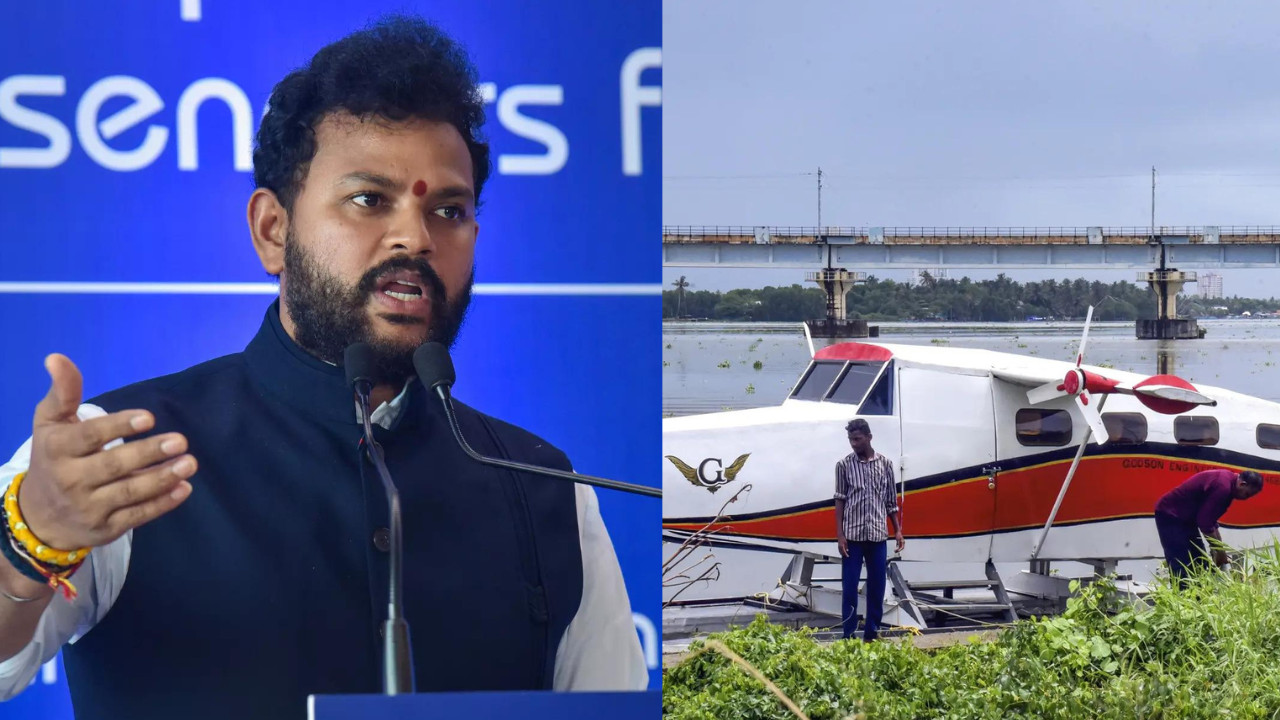Union Civil Aviation Minister Ram Mohan Naidu announced the revival of seaplane services in India, expected to commence by October on at least two routes. Simplified guidelines aim to encourage operations in areas like Andaman & Nicobar, Kerala, or Andhra Pradesh. The service, potentially extending to Odisha’s Chilika Lake, requires minimal water depth and landing space.
Taking to the Skies (and Seas!): Seaplane Services Set for Revival
Imagine gliding over India’s stunning landscapes, trading congested roads for the freedom of the sky, and landing directly on a tranquil lake or bustling riverfront. That vision, once a tantalizing glimpse of the future, is about to become a reality again. After a brief hiatus, seaplane services are poised to make a comeback, promising a new era of connectivity and tourism.
The government is reigniting its ambitious seaplane project, aiming to have services operational as early as October. This isn’t just a relaunch; it’s a reboot with streamlined guidelines and a renewed focus on practical implementation. Civil Aviation Minister K. Ram Mohan Naidu recently announced that two routes are being finalized to kickstart this exciting venture, paving the way for faster, more convenient travel across the country.
Why Seaplanes? More Than Just a Novelty
The appeal of seaplanes extends beyond their novelty. They offer a unique solution to India’s diverse geography and infrastructure challenges. With a vast network of rivers, lakes, and coastal areas, seaplanes can unlock access to remote locations that are difficult or time-consuming to reach by traditional means.
Think about it: a quick hop from a bustling city center to a serene backwater destination, or a direct flight to a pilgrimage site nestled near a river. Seaplanes can drastically reduce travel time and open up new avenues for tourism, boosting local economies and connecting communities. This initiative promises to revolutionize regional connectivity, particularly benefiting areas with limited airport infrastructure. The idea is not just to fly, but to weave the very fabric of India’s waterways into the national transport network.

Simplified Rules for Smooth Takeoff
One of the key factors contributing to the initial slowdown of seaplane projects was complex regulatory hurdles. Learning from past experiences, the government is now prioritizing simplified guidelines to encourage greater participation from private operators. This includes easing operational procedures, streamlining environmental clearances, and providing clearer frameworks for safety and security.
This focus on ease of doing business is expected to attract more investment and innovation in the sector. By reducing bureaucratic bottlenecks, the government hopes to create a more conducive environment for seaplane operators to thrive and expand their services. The goal is to make the process of establishing and running a seaplane service as seamless as possible, fostering healthy competition and ultimately benefiting the consumer.
Initial Routes and Future Expansion
While the specific routes haven’t been officially disclosed, the initial focus is likely to be on areas with high tourism potential and strong demand for alternative transportation options. Imagine a scenic flight over the backwaters of Kerala, or a quick trip to the Andaman and Nicobar Islands.
The success of these initial routes will be crucial in shaping the future of seaplane services in India. The government envisions a phased expansion, gradually adding more routes and connecting more destinations as the sector matures. The long-term vision is to create a comprehensive network of seaplane routes that complement existing air, rail, and road infrastructure, providing a seamless and integrated transportation system for the entire country. Could we soon see seaplanes as a common mode of transport, zipping between major cities and remote villages alike?
More Than Transportation: The Ripple Effect
The revival of seaplane services extends beyond just travel convenience. It has the potential to create a ripple effect across various sectors. Tourism will undoubtedly receive a significant boost, attracting both domestic and international visitors to explore India’s hidden gems. Local economies will benefit from increased tourism revenue and the creation of new job opportunities.
Furthermore, seaplanes can play a vital role in disaster relief and emergency medical services, providing rapid access to remote and inaccessible areas. They can also be used for cargo transportation, connecting businesses and facilitating trade in regions with limited infrastructure. The possibilities are endless, and the potential impact is immense.
Related Content: [Link to article about infrastructure developments in India]
Looking Ahead: A Promising Horizon
The relaunch of seaplane services represents a bold step towards transforming India’s transportation landscape. By leveraging the country’s vast waterways and simplifying regulatory processes, the government is paving the way for a new era of connectivity and tourism.
While challenges undoubtedly remain, the commitment to streamlined guidelines and phased expansion suggests a strong belief in the potential of this innovative mode of transportation. As the first seaplanes take to the skies again, we can look forward to a future where travel is not just efficient, but also a breathtaking experience. The successful integration of seaplane services into India’s transportation network hinges on collaboration, forward-thinking policies, and the embrace of innovation. It’s not just about planes; it’s about progress, connectivity, and unlocking the potential of a nation.







